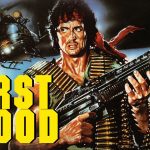The Last Legion (2007)

The Last Legion (2007) is a historical action-adventure film directed by Doug Lefler and based on the 2002 novel of the same name by Valerio Massimo Manfredi. Set in the crumbling Roman Empire of the 5th century, the film follows a small group of loyalists who attempt to protect the last Roman emperor from the invading Goths and other enemies. While the film has a promising premise that blends history with myth, it ultimately suffers from weak execution and a lack of narrative cohesion.
Plot Summary:
The story begins in 476 AD, with the fall of the Western Roman Empire. The young emperor, Romulus Augustus (played by Thomas Sangster), ascends to the throne but is soon overthrown by the invading Gothic forces led by Odoacer (Peter Mullan). The Roman general and loyal protector, Aurelius (Colin Firth), is tasked with rescuing Romulus after the empire falls.
With the help of a mysterious warrior, Mira (Aishwarya Rai), and an aging mentor, Ambrosinus (Ben Kingsley), who serves as both a philosopher and a sorcerer, Aurelius sets out on a dangerous journey to Britain. There, they hope to reunite with the fabled Ninth Legion, Rome’s last remaining loyal soldiers, and protect Romulus, who might have a more important destiny than anyone realizes.
As they evade enemies, the group also discovers the legendary sword of Julius Caesar, which bears a striking resemblance to the mythical sword Excalibur, blending elements of Roman history with the lore of King Arthur.

Review:
Strengths:
- Mythical-Historical Blend:
- The film attempts to fuse history with myth, particularly in the way it connects the fall of Rome with the rise of the Arthurian legend. The idea that Romulus Augustus, the last Roman emperor, might somehow be connected to the myth of King Arthur is an intriguing concept that lends the film a sense of epic, historical fantasy.
- The discovery of a sword resembling Excalibur adds a fantastical twist, turning the narrative into a pseudo-origin story for Arthurian legend. While the film doesn’t explore this idea in great depth, it gives the film a unique historical-fantasy flavor.
- Ben Kingsley’s Performance:
- Ben Kingsley stands out as Ambrosinus, a Merlin-like figure who guides and protects Romulus. His character, a philosopher with mystical abilities, adds a layer of mysticism to the story. Kingsley brings a sense of gravitas to his role, even though the script doesn’t always give him enough to work with. His presence adds depth to the otherwise standard action-adventure narrative.
- Exotic Visuals and Production Design:
- The film’s production design, particularly the costumes and sets, is well-executed. From the crumbling grandeur of Rome to the untamed wilderness of Britain, the visuals give the story an epic, historical feel. The film’s locations—spanning Roman ruins to Britain’s foggy landscapes—are well-chosen and enhance the atmosphere of a dying empire and an emerging legend.

- The film’s production design, particularly the costumes and sets, is well-executed. From the crumbling grandeur of Rome to the untamed wilderness of Britain, the visuals give the story an epic, historical feel. The film’s locations—spanning Roman ruins to Britain’s foggy landscapes—are well-chosen and enhance the atmosphere of a dying empire and an emerging legend.
- Action Sequences:
- The film features several action-packed sequences, including sword fights and battle scenes, that deliver entertainment for fans of historical action-adventure films. While not groundbreaking, these moments provide enough excitement to keep the story moving. Aishwarya Rai as the skilled warrior Mira adds flair to the fight scenes with her acrobatic combat style.
Weaknesses:
- Weak Character Development:
- Despite a strong cast, the characters in The Last Legion lack depth. Colin Firth’s Aurelius is a standard action hero—brave, noble, and stoic—but he’s not given enough complexity to make him stand out. Romulus Augustus, as the child emperor, is sympathetic but not particularly compelling as the central figure of the story.
- Aishwarya Rai’s Mira is portrayed as a fierce warrior, but her character is underdeveloped and primarily serves as the film’s love interest and action sidekick. The romantic subplot between Aurelius and Mira feels forced and lacks emotional resonance.
- Predictable Plot and Pacing:
- The film follows a fairly predictable trajectory, with few surprises or twists. The journey to Britain and the eventual showdown with the enemies of Rome feels formulaic, and the stakes never feel particularly high. As a result, the film’s pacing drags in certain sections, particularly in the middle where the plot feels stretched thin.
- The film attempts to balance historical events with fantastical elements, but it doesn’t dive deep enough into either. The historical setting of Rome’s collapse is intriguing, but the movie only skims the surface of this rich backdrop, and the mythical aspects—like the connection to Arthurian legend—are underexplored.
- Tonally Confused:
- The Last Legion struggles with its tone, never fully committing to either historical drama or fantasy epic. As a result, the film feels unsure of itself. The script jumps between moments of seriousness (the fall of an empire, Romulus’ exile) and lighter, swashbuckling action scenes, but these shifts are jarring and affect the overall cohesiveness of the narrative.
- The film’s blend of history and myth, while a strength in concept, doesn’t mesh as smoothly as it could have. There’s a sense that the filmmakers weren’t sure how far to lean into the fantasy elements, and this uncertainty leads to a somewhat disjointed final product.

- Underwhelming Villains:
- The film’s primary antagonist, Odoacer (Peter Mullan), doesn’t leave much of an impact as a villain. His motivations are standard—he wants power and control over the Roman Empire—but he lacks the menace or complexity to be a truly memorable antagonist. The Goths, as a threat, are depicted in a one-dimensional manner, and the film misses opportunities to explore their perspective or give them more depth.
Themes and Interpretation:
At its core, The Last Legion explores themes of loyalty, the end of an era, and the emergence of legends. The fall of the Roman Empire represents the end of one world, while the journey of Romulus Augustus hints at the birth of another—the Arthurian age. The film touches on the idea of destiny, with Romulus being a young leader destined for greatness, even if it’s not as the emperor of Rome.
The sword’s connection to Excalibur suggests that the legends of the past are never truly gone but are reborn in new forms. The film also emphasizes the importance of honor and duty, with characters like Aurelius and Mira standing as symbols of the old Roman virtues even as the empire collapses around them.
Conclusion:
The Last Legion is an ambitious attempt to blend historical drama with mythological fantasy, but it ultimately falls short of its potential. While the premise of linking the fall of Rome to the rise of King Arthur is intriguing, the film’s weak character development, predictable plot, and uneven tone prevent it from becoming a memorable entry in the genre. However, fans of historical adventure films might still find some enjoyment in its action sequences and its exploration of a unique moment in history. For those looking for a deeper, more complex narrative, though, The Last Legion doesn’t quite deliver.











